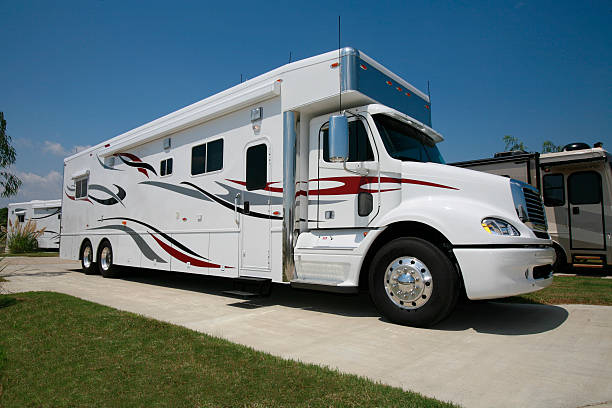Traditional dealerships are changing. Walk-in traffic is down. Online leads are harder to convert. Margins are squeezed. And yet—RV travel is booming.
So where’s the disconnect?
It turns out, thousands of customers aren’t skipping the RV lifestyle—they’re starting with rentals. And the smartest dealerships aren’t resisting this trend. They’re partnering with rental management companies to capture a new layer of opportunity.
In this article, we break down how RV dealerships can boost sales, move idle inventory, and build long-term customer pipelines by teaming up with rental platforms like RVM.
Table of Contents
- Why Rentals Are the New RV Showroom
- What Rental Management Actually Looks Like
- The Three Main Ways Dealers Can Partner
- Case Study: A Dealership That Doubled Its Lead Pipeline
- Turning Unsold Inventory into Rental Revenue
- Using Rentals to Create Future Buyers
- Revenue Sharing, Consignment & Hybrid Sales Models
- Protecting Your Brand and Inventory
- FAQs Dealers Ask Before Partnering
- Conclusion: Don’t Just Sell RVs—Create RV Users
1. Why Rentals Are the New RV Showroom

Most RV buyers today don’t walk into a dealership cold. They come in after:
- Seeing a friend’s Instagram trip
- Renting an RV for a national park tour
- Spending a weekend in a Class C with their family
Rentals are now the top of the funnel. They’re the test drive. The first impression. The lifestyle preview.
🟦 “I didn’t think I was an RV person until we rented one for a weekend,” said Olivia, a renter-turned-buyer in Texas. “After that, we started shopping the same month.”
2. What Rental Management Actually Looks Like
Many dealerships picture running their own rental program—then give up after realizing it’s a full-time operation.
But rental management companies like RVM take care of the:
- Bookings
- Insurance
- Onboarding
- Maintenance
- Customer support
- Cleanings and turnover logistics
Dealers get to focus on sales—while RVM handles the operational lift of getting units on the road and booked out.
3. The Three Main Ways Dealers Can Partner
Rental partnerships aren’t one-size-fits-all. RVM offers flexible models tailored to dealership size and goals:
1. Consignment Program
You supply units. RVM lists, rents, and manages them. You earn a share of every booking.
2. Referral Program
Send renters to RVM. When they rent—or later buy—you get a referral bonus or sales credit.
3. Joint Sales & Rental Showroom
List certain units as both for sale and available to rent. It’s a live-action test drive that converts.
🟦 “We gave RVM six of our travel trailers and cleared $14K in the first quarter in rental commissions,” said a dealership owner in Idaho. “Two of the units sold to renters who fell in love with them.”
4. Case Study: A Dealership That Doubled Its Lead Pipeline
Mountain View RV, a medium-sized dealer in Colorado, partnered with RVM after noticing rental activity in their region was outpacing their foot traffic.
They started with a 5-unit consignment, adding “Rent Me or Buy Me” signs on their lot.
In six months:
- They generated over $21K in rental revenue
- Captured 80+ renter leads
- Converted 5 renters into full-unit buyers
- Used feedback from renters to improve how they pitched units
🟦 “It became our best-performing lead channel—more consistent than Google Ads,” said the GM.
5. Turning Unsold Inventory into Rental Revenue

We’ve said it before: idle RVs lose money.
But when those aging units are put into rental service:
- They generate monthly cash flow
- Stay visible and market-ready
- Often get rented by the very people who might buy them
Dealers can turn year-old stock into temporary income machines, rather than cutting prices to the bone.
6. Using Rentals to Create Future Buyers
Today’s renters are tomorrow’s customers.
In fact, industry data shows that 18–25% of RV renters buy within 12–18 months. And who are they most likely to buy from?
👉 The dealership that gave them their first taste of the lifestyle.
🟦 “The family who rented our unit for spring break came back in June and bought the exact same model. They even asked for the same color scheme,” said a dealer in North Carolina.
7. Revenue Sharing, Consignment & Hybrid Sales Models
Dealerships get to choose how hands-on they want to be.
Consignment? Keep ownership, let RVM manage everything, and earn a monthly cut.
Revenue Share? Split bookings and keep inventory moving.
Hybrid Sales? Let renters book the units—then offer to credit a portion of their rental cost toward purchase.
It’s win-win-win: more visibility, more income, more conversions.
8. Protecting Your Brand and Inventory
Every dealership wants to know: Will this hurt my inventory or reputation?
RVM takes steps to ensure it won’t:
- Full guest verification
- Rental insurance and liability coverage
- Pre/post trip inspections
- Custom onboarding materials to match your brand
🟦 “They treated our units better than we expected,” said a skeptical dealer who gave RVM two Class Bs. “Not a scratch after 40 rental nights.”
9. FAQs Dealers Ask Before Partnering
Q: Do I have to set up the rentals myself?
A: No. RVM handles listing, logistics, customer service, and turnover.
Q: Can I still sell the unit?
A: Yes. Units can be listed “for sale” while still earning rental income.
Q: What happens if a unit is damaged?
A: RVM provides full coverage, from damage protection to roadside support.
Q: Is this only for big dealers?
A: No. Even small dealers with 2–3 spare units can benefit from a rental partnership.
10. Conclusion: Don’t Just Sell RVs—Create RV Users

Dealerships have always been the gateway to the RV lifestyle. But today, that gate swings both ways.
By partnering with rental management companies like RVM, dealers can:
- Unlock new revenue streams
- Convert renters into buyers
- Protect aging inventory
- Stay relevant in a changing marketplace
It’s not just about moving metal anymore. It’s about creating RV believers—one rental at a time.
Let your dealership lead the way into the future of recreational mobility.
— RVM Team

